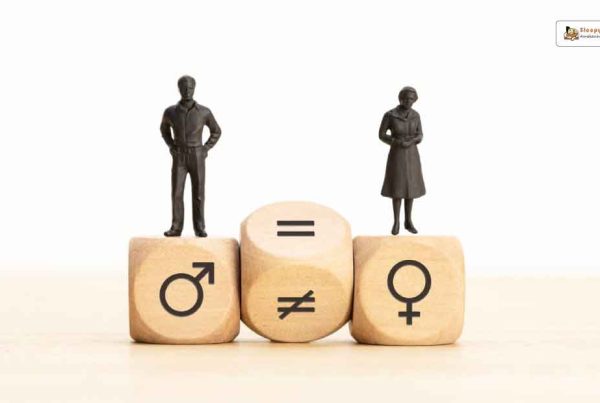Women in India have come a long way, but there’s still a long journey ahead. While there have been many achievements in empowering women, there are still many challenges that need to be addressed. This article explores the current status of women in India, the efforts by the government to empower them, and the roadblocks they face. It also looks at the role of education, the difference between rural and urban empowerment, and what the future holds.
Key Takeaways
- The status of women in India shows both progress and ongoing challenges.
- Government initiatives like Beti Bachao Beti Padhao and Mahila E-Haat aim to empower women.
- Cultural and social barriers, economic disparities, and political representation are major roadblocks.
- Women entrepreneurs in India face unique challenges but also have many opportunities.
- Education plays a crucial role in empowering women and improving their lives.
Current Status of Women in India
The present status of women in India is a mix of progress and ongoing challenges. In every corner of India, there are countless women with untapped potential, waiting to be unleashed. The journey towards gender equality is ongoing, with significant achievements and persistent roadblocks.
Economic Participation
Women in India are increasingly participating in the economy, especially in rural areas. Indian data reveals rural women are more economically empowered than urban women, with a sharp increase in women engaged in agricultural work. However, urban women still face significant barriers to economic participation.
Educational Attainment
Education for women in India has seen substantial improvements. More girls are attending school and completing higher education than ever before. Yet, there are still gaps, especially in rural areas where access to quality education remains a challenge.
Health and Well-being
The health and well-being of women in India have improved, but there are still many issues to address. Maternal health has seen progress, but access to healthcare services is still limited in many regions. Efforts are ongoing to improve the overall health and well-being of women across the country.
Major Government Initiatives for Women Empowerment
The Indian government has launched several initiatives to uplift and empower women across the country. These programs aim to address various aspects of women’s lives, from education to economic independence and safety.
Beti Bachao Beti Padhao
The Beti Bachao Beti Padhao (Save the Daughter, Educate the Daughter) scheme focuses on improving the child sex ratio and promoting girls’ education. It aims to change societal attitudes towards girls and ensure their survival, protection, and education.
Mahila E-Haat
Mahila E-Haat is an online platform that provides women entrepreneurs with a space to showcase and sell their products. This initiative helps women gain financial independence by connecting them directly with buyers, thus eliminating middlemen.
One Stop Center Scheme
The One Stop Center Scheme, also known as Sakhi, provides integrated support and assistance to women affected by violence. These centers offer medical aid, police assistance, legal aid, and psychological counseling under one roof, ensuring that women receive comprehensive help in times of crisis.
The Swadhar Greh scheme is another government project aimed at empowering women by providing them with shelter, food, clothing, and social, economic, and health support.
Challenges in Achieving Gender Equality
Cultural and Social Barriers
In India, cultural and social barriers significantly hinder gender equality. Traditional norms often dictate the roles and responsibilities of women, limiting their opportunities. Addressing gender discrimination in India requires a multi-pronged approach targeting the root causes. These barriers are deeply ingrained in society, making change slow and difficult.
Economic Disparities
Economic disparities between men and women are stark. Women often have less access to resources, lower wages, and fewer job opportunities. This economic gap makes it hard for women to achieve financial independence. To bridge this gap, targeted legislation and cultural shifts are essential.
Political Representation
Women’s political representation in India remains low. Despite some progress, women are still underrepresented in political offices. Increasing women’s participation in politics is crucial for achieving gender equality. This requires not only policy changes but also a shift in societal attitudes towards women leaders.
Women’s empowerment is facing multiple roadblocks, mainly in the tussle between humanity and cruelty, justice and fairness, opportunity and limitation.
Women Entrepreneurship in India
Opportunities for Women Entrepreneurs
In every corner of India, there are countless women with untapped potential, waiting to be unleashed. The journey towards gender equality in business is ongoing, but empowering women entrepreneurs is a crucial step. Various initiatives and programs are designed to help women seize opportunities and face challenges in business. The America India Foundation supports women entrepreneurs across India’s thriving industries with digital, financial, and strategic assistance.
Challenges Faced by Women Entrepreneurs
Women entrepreneurs in India face numerous challenges. These include limited access to funding, societal norms, and balancing family responsibilities. Despite these hurdles, many women continue to break barriers and succeed in their ventures. The roadblocks in improving the status of women in India are significant, but not insurmountable.
Support Systems and Networks
Support systems and networks play a vital role in the success of women entrepreneurs. Organizations and government initiatives provide resources and mentorship to help women navigate the business landscape. These support systems empower the women to seize various opportunities and face challenges in business. With the right support, women entrepreneurs can thrive and contribute significantly to the economy.
Role of Education in Women Empowerment
Access to Quality Education
Access to quality education is a cornerstone for empowering women. Effective strategies for promoting women’s empowerment in education include offering scholarships and financial support to overcome economic barriers. Ensuring that girls have safe and supportive learning environments is also crucial.
Vocational Training and Skill Development
Vocational training and skill development programs are essential for equipping women with the skills they need for the job market. These programs can help women become self-reliant and improve their economic status. Offering courses in various trades and professions can open up new opportunities for women.
Impact of Education on Empowerment
Education has a profound impact on women’s empowerment. It not only provides knowledge but also boosts confidence and self-esteem. Educated women are more likely to participate in economic activities and decision-making processes, leading to a more balanced and just society.
Education is a powerful tool that can break the cycle of poverty and inequality, paving the way for a brighter future for women and their communities.
Rural vs Urban Women Empowerment
Economic Activities in Rural Areas
In India, rural women are often more economically active than their urban counterparts. This is largely due to their significant involvement in agricultural work. Rural women contribute immensely to the agricultural sector, which is a major part of India’s economy. They engage in various activities such as farming, livestock rearing, and handicrafts, which provide them with a source of income and a degree of economic independence.
Challenges in Urban Settings
Urban women, on the other hand, face different challenges. While they may have better access to education and healthcare, they often struggle with balancing work and family responsibilities. Additionally, urban women frequently encounter workplace discrimination and safety concerns, which can hinder their professional growth and economic empowerment.
Comparative Analysis
| Aspect | Rural Women | Urban Women |
|---|---|---|
| Economic Participation | High due to agricultural involvement | Moderate, with more formal employment |
| Education | Limited access | Better access |
| Healthcare | Limited facilities | Better facilities |
| Safety | Relatively safer | Higher safety concerns |
The comparative analysis of women in rural and urban areas highlights the unique challenges and opportunities they face. While rural women are more engaged in economic activities, urban women benefit from better education and healthcare facilities. However, both groups require targeted support to overcome their specific challenges and achieve true empowerment.
The Future of Women Empowerment in India
Policy Recommendations
To ensure a brighter future for women in India, strong policy recommendations are essential. These policies should focus on increasing women’s participation in all sectors, from education to politics. Additionally, there should be a push for stricter laws against gender-based violence and discrimination.
Grassroots Movements
Grassroots movements play a crucial role in driving change at the local level. Women leaders like Neeru, Hemakumari, and Supriya have shared their journey of localizing sustainable development goals (SDGs) to directly improve the lives of women and girls. These movements often address unique local challenges and provide tailored solutions.
Technological Advancements
Technology can be a powerful tool for women empowerment. From online education platforms to digital financial services, technology offers numerous opportunities for women to enhance their skills and economic status. Embracing technological advancements can help bridge the gap between rural and urban women, providing equal opportunities for all.
The future of women empowerment in India looks promising, but it requires collective efforts from the government, communities, and individuals to turn potential into reality.
Conclusion
In conclusion, the journey towards women empowerment in India is a mix of significant achievements and ongoing challenges. While there have been notable strides in areas like education, entrepreneurship, and legal rights, many women still face barriers that prevent them from reaching their full potential. Government initiatives have played a crucial role in driving progress, but more needs to be done to address the deep-rooted cultural and social issues that hinder true equality. By continuing to support and invest in women’s empowerment, India can unlock the untapped potential of countless women, leading to a more just and prosperous society for all.
Frequently Asked Questions
What are the main obstacles to improving the status of women in India?
The main obstacles include cultural and social barriers, economic disparities, and lack of political representation.
Can you name some major government initiatives for women’s empowerment in India?
Some major initiatives are Beti Bachao Beti Padhao, Mahila E-Haat, and the One Stop Center Scheme.
How is the current status of women in India?
Women in India have made significant progress in areas like education and health, but they still face many challenges, especially in economic participation and political representation.
What opportunities exist for women entrepreneurs in India?
There are many opportunities for women entrepreneurs, including access to various support systems and networks that help them start and grow their businesses.
What role does education play in women’s empowerment?
Education is crucial for women’s empowerment as it provides them with the knowledge and skills needed to improve their lives and make informed decisions.
How does women’s empowerment differ between rural and urban areas in India?
In rural areas, women are often more involved in agricultural work, while in urban areas, they face different challenges like balancing work and family life. The level of empowerment can vary greatly between these settings.







